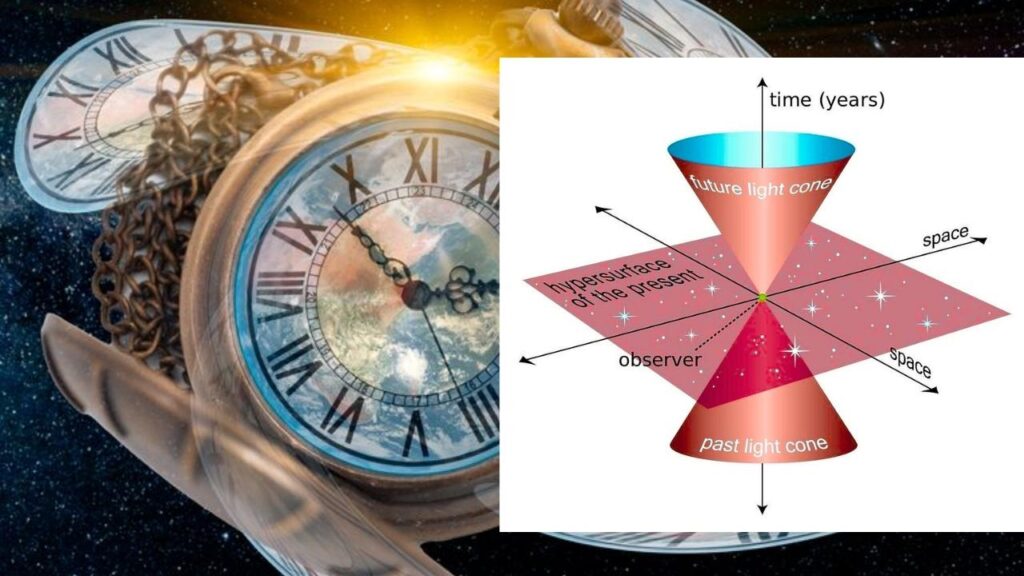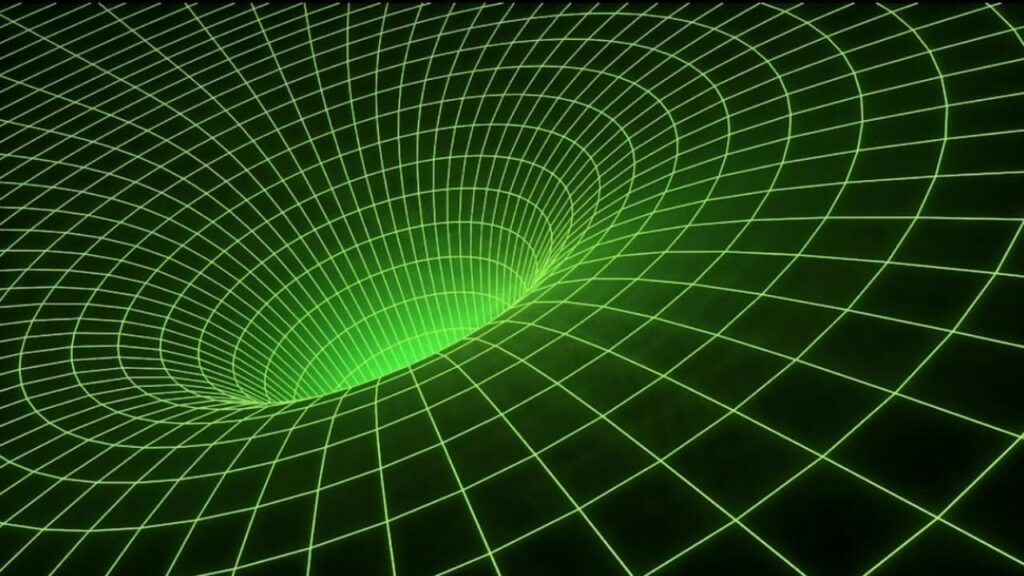Time Is the Real Fabric of the Universe: What if everything we know about the universe is upside down? For over a century, scientists have believed that space and time form the fabric of our reality—a four-dimensional stage called spacetime. But a new, groundbreaking study led by Dr. Gunther Kletetschka at the University of Alaska Fairbanks is flipping that idea on its head. According to his research, time—not space—is the true foundation of the universe, and it comes in three dimensions, just like space.

This revolutionary idea could change how we understand everything from the tiniest particles to the largest galaxies. Let’s break down what this means, why it matters, and how it could impact science—and your imagination.
Time Is the Real Fabric of the Universe
| Topic | Summary | Data/Stats/Details |
|---|---|---|
| Main Theory | Time has three dimensions; space is a secondary effect | Universe has 6 total dimensions: 3 of time, 3 of space |
| Testable Predictions | Matches known particle masses (e.g., top quark, electron) | Top quark: 173.21 ± 0.51 GeV (predicted) vs 173.2 ± 0.9 GeV (measured) |
| Unification Potential | Could help unify quantum physics and gravity | Offers new mathematical framework for a “theory of everything” |
| Practical Example | Time as a 3D canvas, space as paint on that canvas | Space emerges from motions within 3D time |
| Professional Impact | New ways to predict unknown particle properties, possible time-travel speculation | Predicts neutrino masses, subtle differences in gravitational wave and light speeds |
| Official Publication | Published April 21, 2025, in Reports in Advances of Physical Science | Peer-reviewed, testable, and mathematically grounded |
Time is the real fabric of the universe, not space—at least, according to a bold new theory. By treating time as a three-dimensional canvas and space as a secondary effect, Dr. Gunther Kletetschka’s research offers a fresh way to solve physics’ deepest mysteries. Whether you’re a student, a scientist, or just someone who loves to wonder, this idea invites you to imagine a universe more complex—and more fascinating—than ever before.
What Is the “Three-Dimensional Time” Theory?
The Traditional View: Spacetime
For over 100 years, physicists have described the universe using spacetime: three dimensions of space (length, width, height) and one dimension of time (the “arrow” that moves forward). This model, made famous by Albert Einstein, has helped explain everything from gravity to black holes.
The New Idea: Time as the Canvas
Dr. Kletetschka’s theory turns this idea inside out. He proposes that time actually has three independent dimensions, and space is a secondary effect—like the paint applied to a canvas, while the canvas itself is made of time.
“These three time dimensions are the primary fabric of everything, like the canvas of a painting. Space still exists with its three dimensions, but it’s more like the paint on the canvas rather than the canvas itself.”
— Dr. Gunther Kletetschka
How Does Three-Dimensional Time Work?
Imagine you’re walking down a straight path. That’s how we usually experience time: moving forward, one second at a time. But what if you could also step sideways or up and down in time, just like you can move left, right, and up in space? That’s what three-dimensional time suggests.

- Time Axis 1 (T₁): The usual forward movement (past to future)
- Time Axis 2 (T₂): Sideways movement—exploring different “what if” scenarios at the same moment
- Time Axis 3 (T₃): Up/down movement—connecting different outcomes or realities
In this model, all physical phenomena happen as paths and interactions within these three axes of time. Space is what we see as a result of these movements.
Why Does This Matter? The Science Behind the Theory
Solving Physics’ Biggest Mysteries
One of the greatest challenges in science is uniting the rules of the very big (gravity, which shapes planets and stars) with the rules of the very small (quantum mechanics, which governs atoms and particles). These two sets of rules don’t always agree, and finding a “theory of everything“ has been a dream for physicists.
Kletetschka’s framework offers a new way to bring these worlds together. By treating time as the true foundation, his math can accurately predict known properties of particles—like the mass of the electron and the top quark—down to an incredible level of precision.
Real-World Predictions
- Top quark mass: Predicted at 173.21 ± 0.51 GeV, measured at 173.2 ± 0.9 GeV.
- Electron mass: Predicted value matches experimental measurements to nine decimal places.
- Neutrino masses: Predicts two types at 0.058 and 0.0086 eV, with 7% and 4% precision, respectively.
These results are not just mathematical games—they can be tested in real experiments, making the theory scientifically valuable.
How Can We Imagine Three-Dimensional Time?
Simple Analogy: The Canvas and the Paint

Think of a painting. The canvas is the base—without it, the painting can’t exist. The paint is what you see, but it only makes sense because it’s on the canvas. In Kletetschka’s theory, three-dimensional time is the canvas, and space is the paint.
Everyday Example: Choosing Your Day
Suppose you wake up and choose cereal for breakfast. In another version of the same day, you choose toast. In a universe with three-dimensional time, both versions could exist side by side—like two paths crossing at the same moment. The third time dimension lets you move between these possibilities, not just forward and backward.
Practical Advice: Why Should You Care?
For Curious Kids and Parents
- Imagination: This theory encourages you to think beyond what you see. Maybe science fiction stories about time travel aren’t so far-fetched!
- Learning: Understanding new ideas, even if they sound wild, is how science moves forward.
For Students and Teachers
- STEM Inspiration: This is a real-world example of how math, physics, and creative thinking combine to solve big mysteries.
- Classroom Discussion: Use the canvas-and-paint analogy to help students visualize abstract ideas.
For Professionals and Researchers
- Research Opportunities: The theory offers new ways to test ideas about the universe, potentially leading to breakthroughs in physics, cosmology, and technology.
- Collaboration: It’s a call for experimentalists to design tests that could confirm or challenge the theory’s predictions.
New Quantum Glasses Could Unlock Optimal Error Correction Codes for More Stable Quantum Computers
Tiny Nanoneedle Cancer-Detection Patch May Replace Painful Biopsies
Superconducting Circuits May Soon Replace Semiconductor Components, Researchers Reveal
FAQs About Time Is the Real Fabric of the Universe
Is this theory widely accepted?
No, it’s still new and not part of mainstream physics. It’s a bold idea that will need more testing and debate before it’s widely accepted.
How can we test if time really has three dimensions?
The theory makes precise predictions about particle masses and other properties. If future experiments confirm these predictions, it will gain credibility.
Does this mean time travel is possible?
Not exactly. While the model allows for movement along different time axes, it doesn’t mean we can build a time machine tomorrow. But it does open up new ways of thinking about time and possibilities.
What does this mean for space?
Space still exists, but it’s seen as a result of motion within three-dimensional time, not as the fundamental stage of reality.
What’s Next? The Road Ahead for Science
This new theory is a major step toward a possible “theory of everything”—a single framework that explains all the forces and particles in the universe. But as with all big ideas, it needs to be tested, challenged, and refined by the scientific community.
If proven true, it could change textbooks, inspire new technologies, and even reshape how we see ourselves in the universe.






